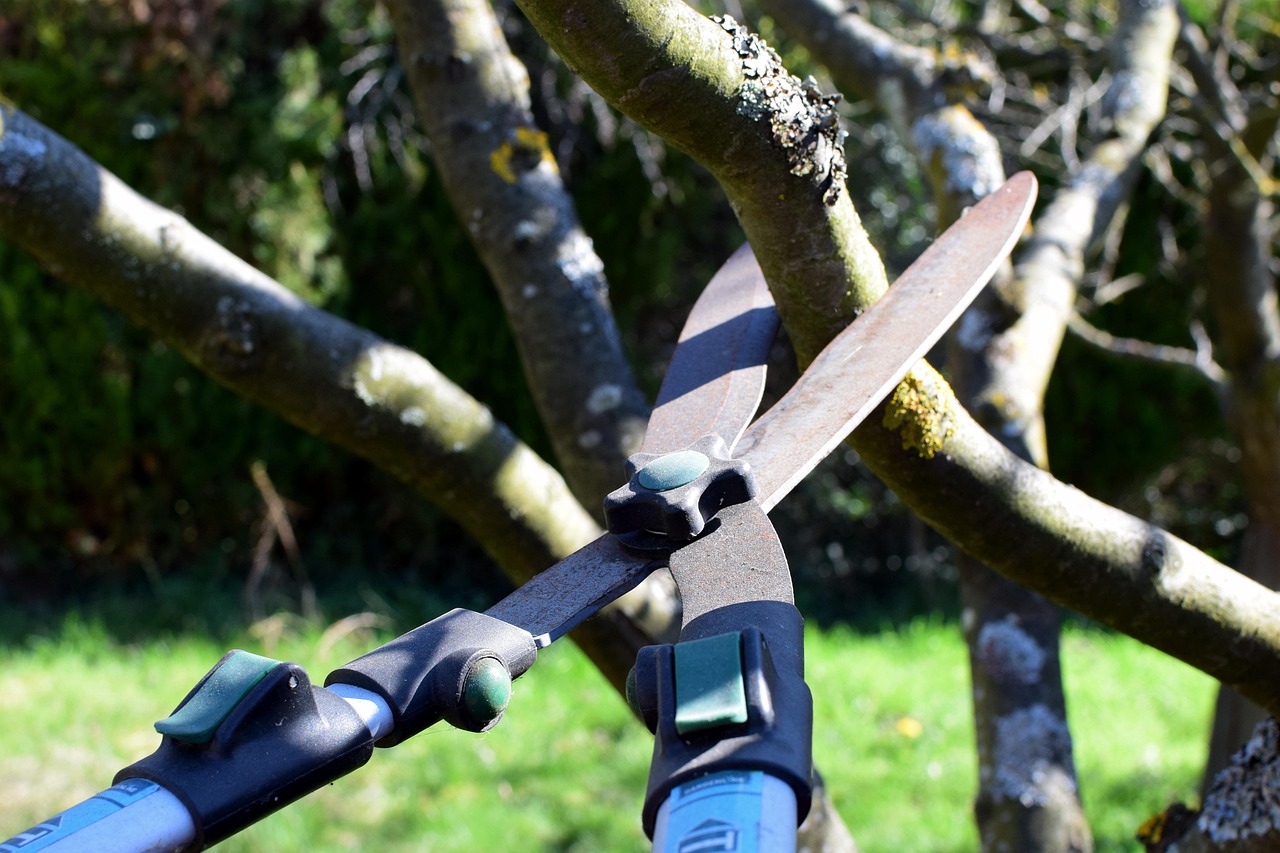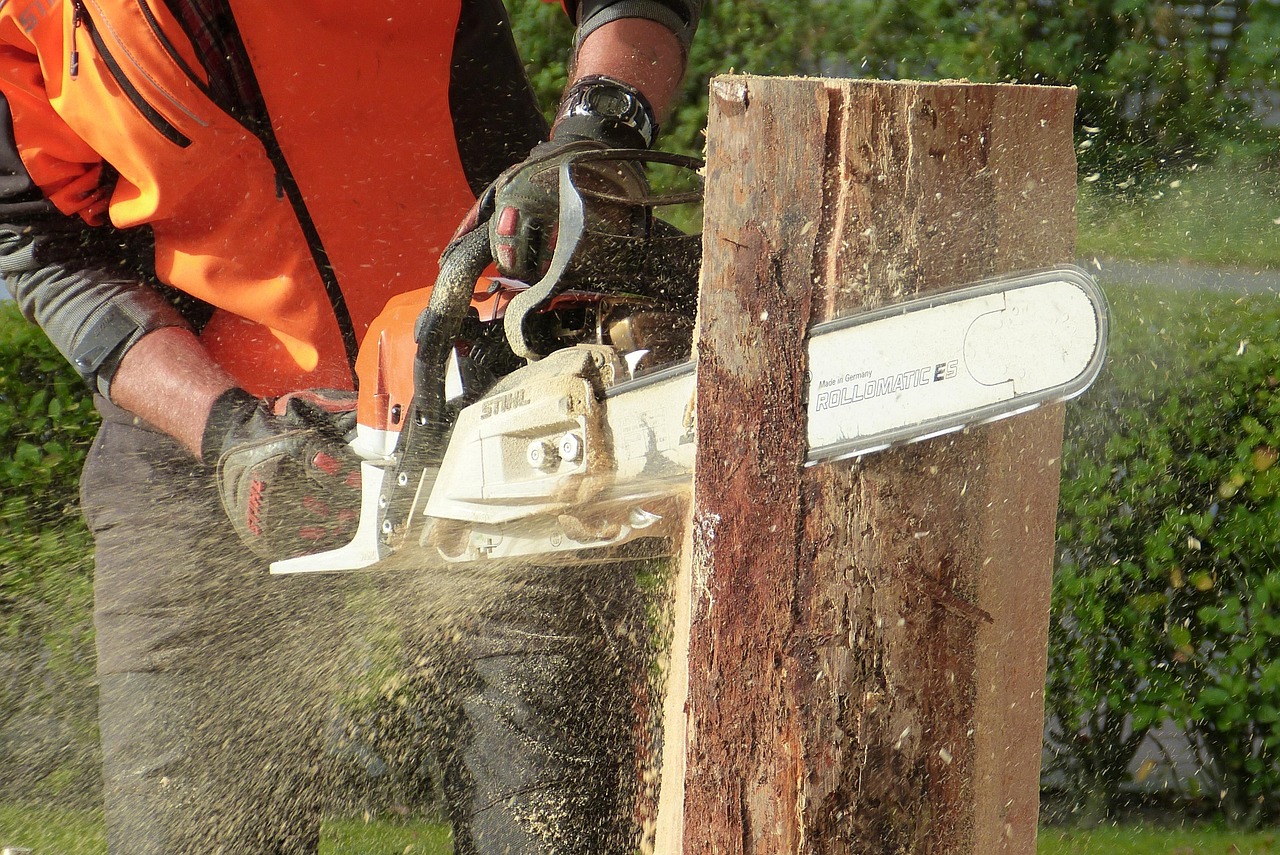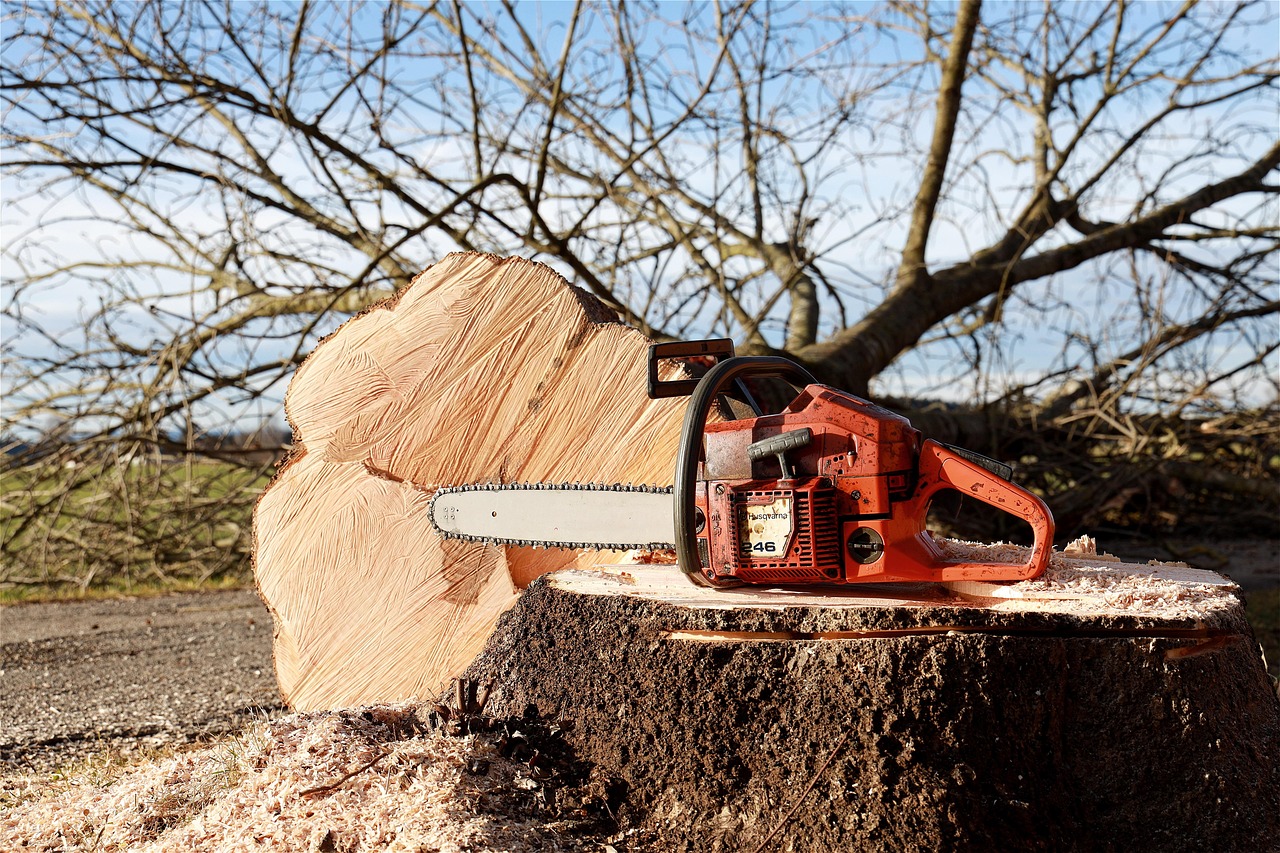Homemade tree pruning sealer can be made using natural ingredients like beeswax, vegetable oil, and an optional essential oil for fragrance. This mixture helps protect tree wounds from pests and diseases, promoting healthier healing.
Pruning trees is an essential part of maintaining their health and appearance. When you prune, you remove branches that are dead, diseased, or simply overcrowded. However, each cut you make can expose the tree to disease and pests. That is where a tree pruning sealer comes into play. A good sealer protects the exposed areas and helps the tree heal more effectively.

Store-bought sealers can be effective, but they often contain chemicals that may not be ideal for every gardener. Fortunately, it is easy to create a homemade tree pruning sealer using simple ingredients found at home or in local stores. This approach not only saves money but also ensures that you are using natural materials that are safe for your trees.
Understanding Tree Pruning Sealers
A tree pruning sealer is a substance applied to the cut surfaces of a tree after pruning. Its primary purpose is to create a protective barrier against environmental factors and potential pathogens. While some gardeners believe that sealing is unnecessary, others find it beneficial for certain types of trees or specific situations.
Here are some key points about tree pruning sealers:

- They help prevent moisture loss from the cut surface.
- They protect against fungal infections and insect infestations.
- They can reduce the risk of decay in the cut area.
While some studies indicate that trees can heal themselves without sealers, there are situations where using a sealer makes sense. For example, young or weakened trees may benefit significantly from the added protection that a homemade sealer provides. Additionally, certain species that are particularly prone to disease can gain advantages from sealing cuts.
Pro-Tips and Common Mistakes I’ve Learned the Hard Way
- When I first started sealing cuts, I underestimated how important clean, smooth cuts are. Using sharp, sterilized pruning tools makes a huge difference in reducing infection risk and ensures the sealer adheres well.
- Early on, I thought I could just slather the sealer on thickly. Turns out, a thin, even layer works best—applying too much can trap moisture underneath or prevent proper healing.
- I used to wait until the weather was perfect to prune and seal. Now I know to avoid sealing during rainy or extremely humid conditions, as excess moisture can promote fungal growth.
- When I first made my homemade sealer, I didn’t measure ingredients precisely. Overheating the beeswax or adding too much essential oil sometimes made application difficult. Precise measurements help consistency.
- Initially, I overlooked the importance of timing. I learned that late winter or early spring, during dormancy, is ideal for pruning and sealing, especially for young or vulnerable trees.
- One common mistake I’ve avoided since learning: neglecting to clean the wound area before sealing. Clearing away debris ensures better adhesion and reduces infection chances.
- Lastly, I used to forget that proper storage extends the shelf life of my sealer. Keeping it away from sunlight and in airtight containers keeps it effective for months.
Ingredients for Homemade Tree Pruning Sealer
Creating a homemade tree pruning sealer requires only a few basic ingredients. Here is a list of what you will need:
- Beeswax: This natural wax forms a protective barrier and is excellent for sealing cuts.
- Vegetable Oil: This helps to soften the beeswax and makes the sealer easier to apply.
- Essential Oils (optional): Oils like tea tree or lavender can add antibacterial properties and pleasant scents.
Recipe for Homemade Tree Pruning Sealer
With the ingredients ready, you can easily make your own tree pruning sealer. Follow these simple steps:

- Melt the Beeswax: In a double boiler, gently melt 1 cup of beeswax over low heat until it becomes liquid.
- Add Vegetable Oil: Slowly stir in 1/2 cup of vegetable oil into the melted beeswax. Mix well until combined.
- Add Essential Oil (optional): If desired, add 10-15 drops of essential oil and stir thoroughly.
- Cool and Store: Pour the mixture into a glass jar or container and let it cool completely before sealing it for storage.
This sealer can be stored in a cool, dry place for several months. When you’re ready to use it, simply warm it slightly to ensure it spreads easily on the cuts of your trees.
Application of Tree Pruning Sealer
Applying the sealer correctly is crucial for its effectiveness. Follow these guidelines for optimal results:
- Ensure the cut surface is clean and free from debris.
- Apply the sealer generously over the cut area using a brush or your fingers.
- Avoid applying too thick a layer; a thin coating is usually sufficient.
- Reapply if necessary after rain or heavy weather conditions.
Using homemade tree pruning sealer not only enhances the health of your trees but also provides peace of mind knowing that you are using natural ingredients. As you start to practice this technique in your gardening routine, you may notice stronger and healthier trees in your landscape.

Benefits of Using Homemade Sealers
The advantages of using homemade tree pruning sealers extend beyond just protecting your trees. Here are some benefits:
| Benefit | Description |
|---|---|
| Cost-effective | Making your own sealer saves money compared to store-bought options. |
| Natural Ingredients | You control what goes into the sealer, ensuring it’s safe for your trees. |
| Easy to Make | The recipe requires minimal ingredients and steps, making it accessible for everyone. |
As you consider your approach to tree care, think about incorporating this homemade solution into your routine. It’s simple, effective, and promotes overall tree health in a natural way.
Choosing the Right Time for Pruning
When it comes to pruning trees, timing is crucial. The right time can greatly influence the effectiveness of your cuts and the healing process that follows. Pruning at the wrong time may expose trees to diseases or hinder their growth.
Generally, the best time to prune trees is during their dormant season, which typically falls in late winter to early spring. However, specific timing can vary by tree species. Here are some important considerations:
- Deciduous Trees: These trees lose their leaves in winter. Pruning during dormancy helps prevent stress and promotes healthy growth in the spring.
- Evergreen Trees: These trees can be pruned in late winter or early spring before new growth begins.
- Flowering Trees: For trees that bloom in spring, it’s best to prune them right after they flower. This allows the tree to set buds for next year.
In addition to seasonal considerations, you should also look for signs that indicate when a tree needs pruning:
- Dead or diseased branches.
- Overcrowded or crossing branches.
- Branches growing towards the center of the tree.
The Importance of Proper Pruning Techniques
Using the correct pruning techniques is essential not only for the health of your trees but also for ensuring that your homemade sealer can be applied effectively. Here are some key techniques to consider:
- Make Clean Cuts: Use sharp, clean pruning tools to ensure smooth cuts. Jagged edges can lead to increased vulnerability to pests and diseases.
- Angle Your Cuts: Make cuts at a slight angle away from the bud or branch collar. This helps direct water away from the cut surface.
- Avoid Topping: Never top a tree; this practice can lead to weak growth and make trees more susceptible to disease.
Understanding how to prune properly sets the foundation for effective healing and reduces the need for excessive sealing.
Common Mistakes to Avoid When Pruning
Even seasoned gardeners can make mistakes when pruning trees. Here are some common errors to watch for:
- Pruning Too Much: Over-pruning can stress trees and hinder growth. Aim to remove only what is necessary.
- Ignoring Tree Species: Different species have unique needs. Research your specific tree types before making cuts.
- Not Using Sealer: Forgetting to apply a sealer on larger cuts may leave trees vulnerable. Always seal significant wounds.
Alternative Homemade Sealers
If you’re interested in exploring other options beyond the beeswax-based sealer, several alternative recipes are available. Here are a few you might consider:
Coconut Oil and Beeswax Sealer
This variation uses coconut oil instead of vegetable oil, providing additional antibacterial properties.
- Melt 1 cup of beeswax in a double boiler.
- Add 1/2 cup of coconut oil and stir until combined.
- Allow it to cool in a jar for later use.
Pine Resin Sealer
Pine resin is a natural adhesive that can be used as a sealer due to its antimicrobial properties.
- Melt 1 cup of pine resin in a pot over low heat.
- Add 1/4 cup of beeswax and mix thoroughly.
- Allow it to cool before storing in a jar.
Storing Your Pruning Sealer
If you create a large batch of homemade pruning sealer, it’s important to store it properly to maintain its effectiveness. Here are some tips for proper storage:
- Use Airtight Containers: Store the sealer in airtight glass jars or containers to prevent moisture from affecting its consistency.
- Avoid Direct Sunlight: Keep the containers away from sunlight, as exposure can degrade the ingredients over time.
- Check Regularly: Periodically check the sealer for any changes in texture or smell, and discard if it appears compromised.
The longevity of your homemade sealer largely depends on how well you store it. Proper care ensures that you have an effective solution ready when you need it.
Environmental Considerations
Using homemade sealers aligns with environmentally friendly gardening practices. By opting for natural ingredients, you minimize your impact on soil health and surrounding ecosystems. Here are some environmental benefits:
- Biodiversity Support: Natural sealers help protect beneficial insects and microorganisms in your garden ecosystem.
- No Harmful Chemicals: Eliminating synthetic chemicals reduces pollution and is safer for wildlife.
- Sustainable Practices: By using easily sourced natural ingredients, you contribute to sustainable gardening methods.
As you continue your journey in tree care, consider how your choices impact both your garden’s health and the environment as a whole. Creating a homemade tree pruning sealer is just one step towards more responsible gardening practices.
Maintaining Tree Health Beyond Pruning
While pruning and sealing cuts are vital for immediate tree care, maintaining overall tree health involves more than just these tasks. A holistic approach to tree care ensures vigorous growth and resilience against pests and diseases. Here are several practices to consider:
Regular Inspections
Conducting regular inspections of your trees can help identify potential problems before they escalate. Look for signs of:
- Diseases: Yellowing leaves, unusual growths, or spots may indicate disease.
- Pests: Check for insects on leaves and branches, as well as signs of infestation like webbing or holes.
- Environmental Stress: Look for signs of stress such as wilting foliage or premature leaf drop.
Early detection allows you to take action more effectively, whether that involves further pruning, applying treatments, or seeking professional advice.
Watering Practices
Proper watering is crucial for tree health. Here are some tips for effective watering:
- Deep Watering: Instead of frequent shallow watering, provide deep watering sessions that encourage roots to grow deeper.
- Avoid Overwatering: Too much water can suffocate roots and lead to root rot. Ensure proper drainage in your soil.
- Mulching: Applying a layer of mulch helps retain moisture and regulate soil temperature.
Understanding your tree species’ specific water needs will also help you determine the best practices for hydration.
Nutrient Management
Nourishing your trees with the right nutrients can significantly enhance their health and growth. Here are some strategies:
- Soil Testing: Conduct a soil test to determine nutrient levels and pH. This will guide your fertilization decisions.
- Organic Fertilizers: Use organic options like compost or well-rotted manure to enrich the soil gradually.
- Seasonal Fertilization: Apply fertilizers during the appropriate growing season to support healthy growth.
Adequate nutrients not only improve overall health but also make trees less susceptible to diseases and pests.
Pest and Disease Management
Despite the best care, trees can still fall victim to pests and diseases. Implementing proactive measures is key to managing these threats. Here are some effective strategies:
Integrated Pest Management (IPM)
IPM combines various management practices to control pests while minimizing risks to people and the environment. Key components include:
- Monitoring: Regularly check trees for signs of pest activity.
- Identification: Accurately identify pests to choose the most effective control methods.
- Cultural Controls: Utilize practices such as crop rotation or planting resistant tree varieties to reduce pest populations.
Natural Remedies
If you discover pest issues, consider natural remedies before resorting to chemicals. Options include:
- Diatomaceous Earth: Sprinkle diatomaceous earth around the base of the tree to deter crawling insects.
- Neem Oil: This natural pesticide can help manage a variety of pests and is safe for beneficial insects when used correctly.
- Insecticidal Soap: A solution of soap and water can be effective against soft-bodied insects like aphids.
Always test any remedy on a small area first to ensure it does not harm the tree.
Seasonal Care Tips
Caring for trees is a year-round commitment that involves different tasks depending on the season. Here’s a breakdown of what to focus on throughout the year:
| Season | Care Tasks |
|---|---|
| Spring | Inspect for winter damage, prune as needed, fertilize, and monitor for pests. |
| Summer | Water regularly, mulch to conserve moisture, and continue monitoring for pests. |
| Fall | Prepare for winter by watering deeply, applying mulch, and inspecting trees for any last-minute pruning needs. |
| Winter | Avoid pruning in freezing temperatures; instead, plan for spring tasks and ensure trees are protected from heavy snow and ice. |
This seasonal approach helps you remain proactive in maintaining tree health throughout the year, leading to stronger and more resilient trees.
The Role of Community in Tree Care
Caring for trees is not just an individual effort; community involvement can enhance tree health across neighborhoods. Engaging with local gardening clubs or conservation programs can provide numerous benefits:
- Shared Knowledge: Learn from others’ experiences and share best practices.
- Tree Planting Events: Participate in community planting initiatives to increase green spaces.
- Caring Collectively: Work together in monitoring local trees for health issues and pest outbreaks.
Cultivating a community spirit around tree care fosters a greater appreciation for nature and promotes environmentally friendly practices.
Emphasizing Education and Awareness
Education plays a critical role in effective tree care. Understanding the needs of different tree species and the best horticultural practices can significantly enhance tree health. Here are some strategies to increase awareness:
- Workshops and Seminars: Attend or organize events focused on tree care, pruning techniques, and environmental stewardship.
- Online Resources: Utilize online platforms, websites, and social media groups dedicated to gardening and tree care to stay informed.
- Local Extension Services: Engage with local agricultural extension services that often provide valuable information tailored to your region.
By fostering a culture of education, communities can empower individuals with the knowledge to take better care of their trees, ultimately benefiting the entire ecosystem.
Incorporating Technology into Tree Care
Advancements in technology have made it easier than ever to monitor and manage tree health. Here are some technologies that can be utilized:
- Mobile Apps: Various apps allow users to identify tree species, diagnose diseases, and track growth patterns.
- Drones: Drones can survey large areas of land, making it easier to identify trees that require attention.
- Soil Sensors: These devices can help monitor soil moisture levels and nutrient content, providing real-time data for better watering and fertilization practices.
Integrating these technologies into your tree care routine can streamline processes and provide valuable insights into maintaining healthy trees.
The Economic Value of Healthy Trees
Healthy trees provide numerous economic benefits that extend beyond aesthetics. They contribute to property value, energy savings, and even air quality improvement. Some key points include:
- Increased Property Value: Well-maintained trees can significantly enhance curb appeal, leading to higher property values.
- Energy Conservation: Trees provide shade and wind protection, which can lower heating and cooling costs for homes.
- Ecosystem Services: Trees play a vital role in absorbing carbon dioxide, producing oxygen, and filtering pollutants from the air.
Recognizing the economic advantages of healthy trees reinforces the importance of proper care and maintenance efforts.
Final Thoughts
Creating a homemade tree pruning sealer is just one part of a larger commitment to tree health. By integrating this practice with proper pruning techniques, seasonal care, community involvement, and continuous education, you can foster stronger and more resilient trees. Your efforts not only contribute to the beauty of your landscape but also support environmental health and biodiversity.
As you embark on your tree care journey, remember that each action you take has the potential to create positive impacts. Whether you are using homemade sealers, attending workshops, or engaging with your community, each step you take enhances not only your trees but also the environment around you. Together, we can cultivate a greener future for generations to come.
Caring for trees is an ongoing process that requires dedication, knowledge, and collaboration. By embracing these principles and sharing your experiences with others, you contribute significantly to the health of your trees and the well-being of your community.
